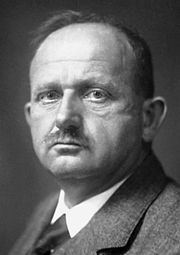Nationality Germany Name Hans Fischer | Role Chemist | |
 | ||
Born 27 July 1881Hochst on Main, Germany ( 1881-07-27 ) Books Die Chemie Des Pyrrols: Bd. Pyrrolfarbstoffe. 2. v Similar People Hermann Emil Fischer, Richard Willstatter, Magnus von Braun | ||
Hans Fischer (27 July 1881 – 31 March 1945) was a German organic chemist and the recipient of the 1930 Nobel Prize for Chemistry.
Contents
Early years
Fischer was born in Hochst on Main. His parents were Dr. Eugen Fischer, Director of the firm of Kalle & Co, Wiesbaden, and Privatdozent at the Technical High School, Stuttgart, and Anna Herdegen. He went to a primary school in Stuttgart, and later to the "Humanistisches Gymnasium" in Wiesbaden, matriculating in 1899. He read chemistry and medicine, first at the University of Lausanne and then at Marburg. He graduated in 1904, and in 1908 he qualified for his M.D.
Career
He worked first at a Medical Clinic in Munich and then at the First Berlin Chemical Institute under Emil Fischer. He returned to Munich in 1911 and qualified as lecturer on internal medicine one year later. In 1913 he became a lecturer in physiology at the Physiological Institute in Munich. In 1916 he became Professor of Medical Chemistry at the University of Innsbruck and from there he went to the University of Vienna in 1918.
From 1921 until his death he held the position of Professor of Organic Chemistry at the Technical University of Munich.
Fischer's scientific work was mostly concerned with the investigation of the pigments in blood, bile, and also chlorophyll in leaves, as well as with the chemistry of pyrrole from which these pigments are derived. Of special importance was his synthesis of bilirubin and haemin. He received many honours for this work, and received the Nobel Prize in 1930. The lunar crater Fischer was named after him (and Hermann Emil Fischer) in 1976.
Personal life
Fischer married Wiltrud Haufe in 1935. He committed suicide in Munich in despair over the destruction of his institute and his work during the last days of World War II.
